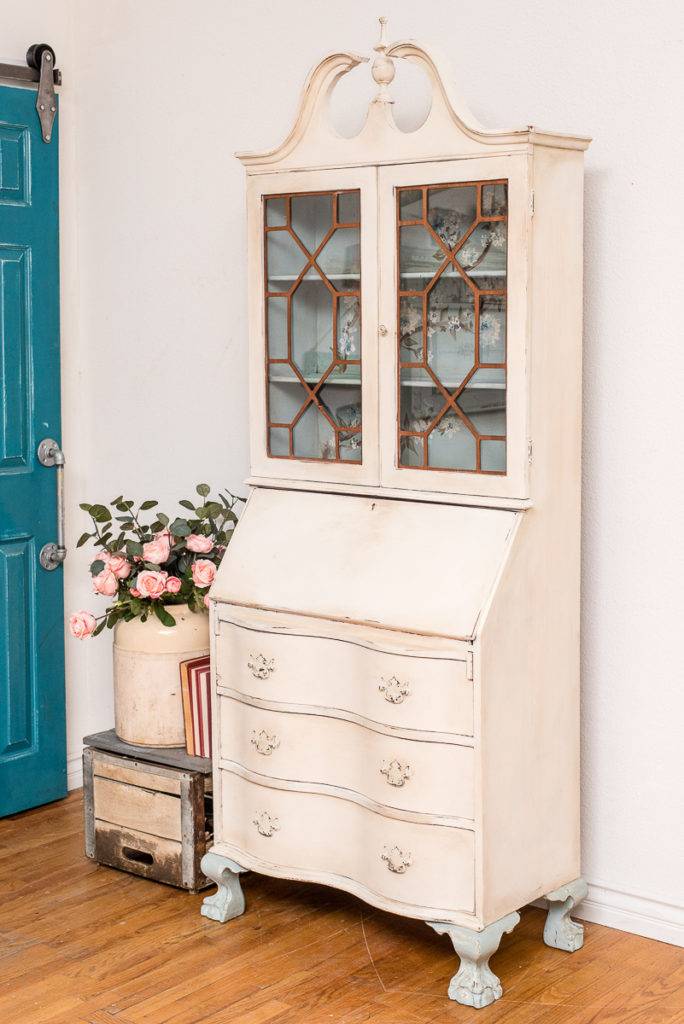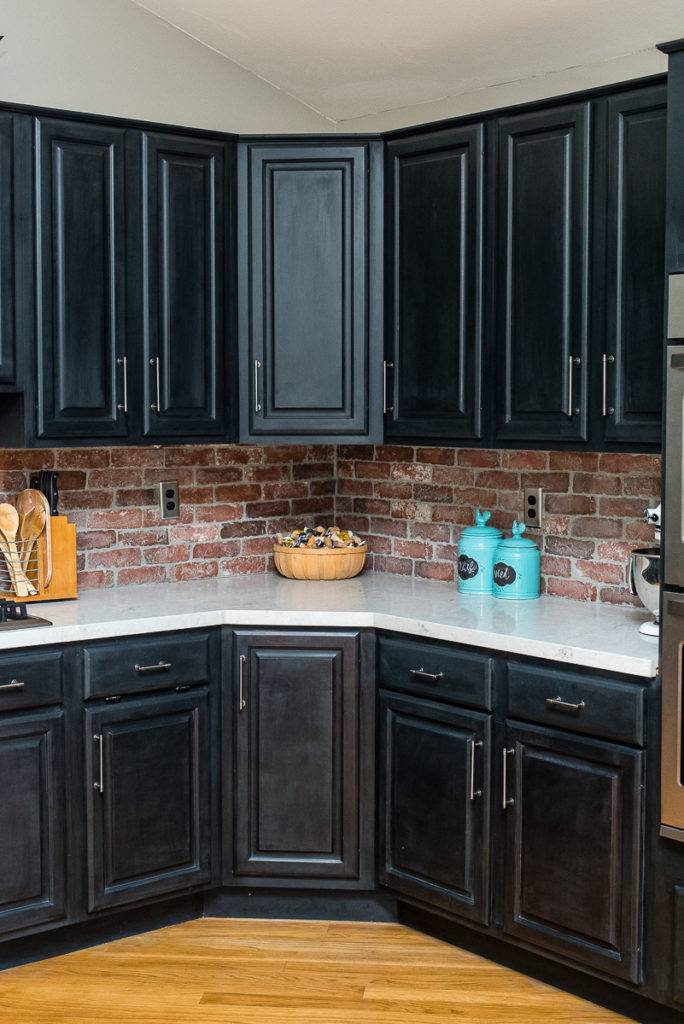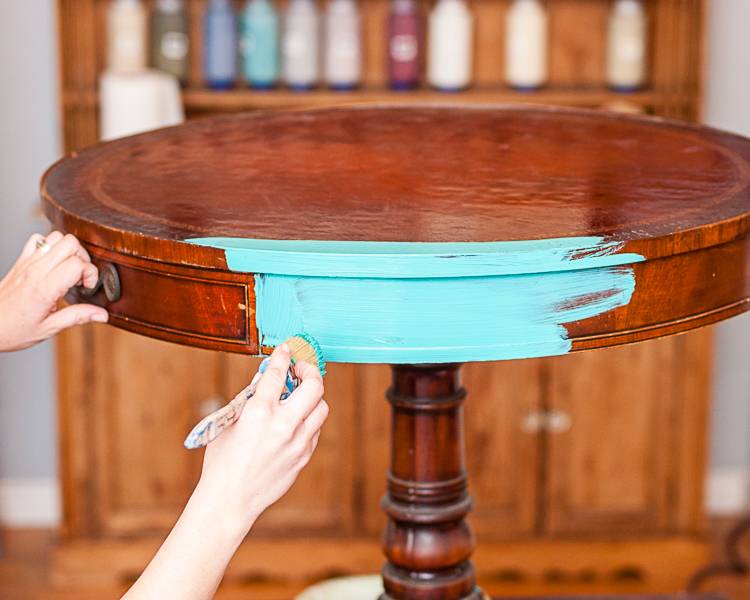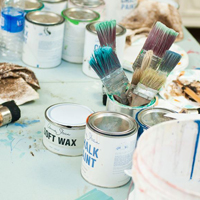We’ve had a lot going on for the past couple of weeks. Piles of custom orders to get out the door. A new series of paint workshops plus some private kitchen cabinet lessons; such a full schedule keeps us all on our toes and in some regards, I think we are more productive than ever when our time is so focused.
All of that to say, that in the diversified paint experiences that we’ve been privy too, there is one common theme that runs throughout my conversations with people.
Embrace Imperfection!
When you bring in your pieces to custom paint, they are going to show the life they’ve lived; chips in the finish, scratches on the surface or dings along the edges. There is nothing you can do (short of taking them to an experienced wood worker) to bring them back to manufactured perfection! So, embrace the flaws!

This guy has bleed through all along the sides-adding some dark wax to help it blend allowed me to embrace those imperfections rather than address the bleed through
Earlier this week, I was working with a customer on her kitchen cabinets. Our conversation went something like this:
“I don’t want any brush strokes in my paint.” -Her
“Well…Okay. But why?” -Me
“Ummm…well…errr…I don’t know.” -Her
“We can do that. Work out the brush strokes by smoothing the finish between coats and using water to help the paint self level. It’ll take some time…much longer process than just applying the paint naturally. But it can be done. HOWEVER…let’s think about what you are trying to achieve with the transformation…” -ME

These cabinets were painted with a large bristled brush to enhance the brush strokes thereby providing beautiful depth of color and texture
Here’s my paint philosophy…and I’ll beat it into people whenever they walk through the door to talk about their “perfect finishes” (in a totally nice way…btw).
If you are going to take the time and go through the expense of a paint project, adjust your perception from bringing perfection back into a worn, well loved space and change it to providing an artisan finish onto a piece (or kitchen cabinets) that has experienced a life well lived. It means you spend your time altering the finish…breathing new life into it by changing the color or adding texture while simultaneously showcasing the artistry behind the process.
(To really understand my philosophy, make note of how I define these finishes:
“Perfect finish”- typically synonymous with a smooth paint finish that does not have the appearance of brush strokes.
“Artisan finish” – a paint finish that shows varying degrees of brush strokes in an irregular pattern).
Consider how contract painters approach a job. They’ll go into a house, throw up some plastic, pull out an industrial paint sprayer, put some paint on your cabinets and call it a day. It is nothing more than function. (I often remind people that if you hire a traditional painter, you’re paying them to spend more time preparing to paint than to actually do the painting).
An artisan will approach the job much more kinesthetically; with a keen eye for style and implementation all while appreciating and enjoying the process itself.

I think it is fair to say that the notion of “painting with the grain in smooth and even brush strokes” has been beaten into our brains for decades. I actually can’t even think of where that idea originated from and where or how we hear so often…but we do. I am releasing you from the pressure of that type of (and more functional approach to) painting!!!!
In a nutshell, here are the advantages of moving away from “perfect”, i.e. smooth finishes:
1. Painting is far more enjoyable when you don’t have to think about the direction and appearance of your brush strokes.
2. It takes much less time to paint artistically than it does to paint “perfectly” and you’re paint will go much further.
3. Perfect paint finishes lack character and artistry providing the appearance that the just rolled off of a manufacturing conveyor belt. Boring!
4. Perfect finishes are much harder to maintain. There’s no room for life to take its natural course in the midst of a perfect paint finish whereas artistic finishes that embrace the existing flaws both wear more naturally and are easier to fix down the road.
5. Artistic finishes; i.e. one that incorporates a variety of brush strokes in varying patterns, are far more unique in style, suggesting time and care of application done by a design professional.
To summarize, while there is a time and place for smoother, more precise finishes, that is the exception rather than the rule. And, to clarify, artistic painting is intentional painting and NOT lazy painting.
Release yourself from the pressure of “painting perfectly” and enjoy the process of painting itself the next time you dive into a project! I give you permission to EMBRACE IMPERFECTION!


